SLC S23 Week6 || Computer Repair - HDD & SSD Storage
Hello my dear steemian friends,
| Assalamu Alaikum & Advance Eid Mubarak |
|---|
I am @saifuddinmahmud from Bangladesh. I am very excited to join Steemit Learning Challenge Season 23 Week 6. The topic is Computer Repair- HDD & SSD Storage, challenged organize by @kouba01. Now I am shearing the homework task.
| HDD Structure and Operation |
|---|
Question: Describe how an HDD stores and retrieves data. What are the key components inside an HDD?
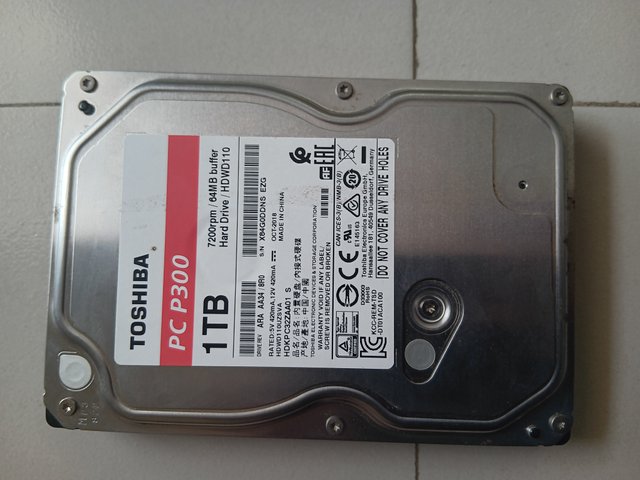 | 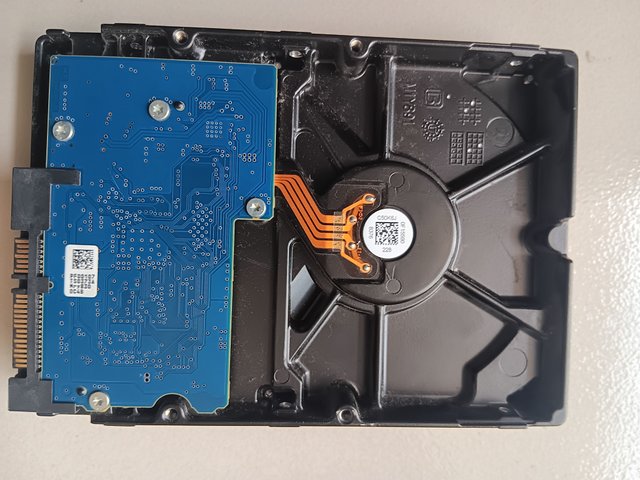 |
|---|
| HDD |
|---|
A hard disk also known as a hard disk drive (HDD). It is a permanent and non-volatile storage device used to store and read data in computers.The hard disk serves as the main storage medium of the computer and permanently stores the operating system, software, files, and other data.
| The key components inside a HDD |
|---|
Hard disk is made up of mechanical and electronic components. Some of its important components are:
| 1)Platter |
|---|
The platter is the disk-shaped metal part of the hard disk where data is stored in magnetic form. A hard disk may have multiple platters, which are connected to a central spindle or wheel. Each platter operates in two directions, resulting in higher data storage capacity as the number of platters increases.
| 2)Read/Write Head (Read/Write Head) |
|---|
The read/write head is a small mechanical part, which is mounted on the platter and reads or writes data from the platter. It is connected to an arm, which is connected to the spindle.It accesses data by moving from side to side on the platter.
| 3)Spindle |
|---|
The spindle is the part where all the platters are mounted and it rotates at high speed by the motor. Hard disk data access time is determined based on spindle speed. Usually the spindle speed of hard disk can be from 5,400 RPM (Revolutions Per Minute) to 15,000 RPM.
| 4)Actuator Arm |
|---|
It helps read and write data by controlling the read/write head to the correct position on the platter.
| 5)Electronic Controller Board |
|---|
It is the microprocessor and electronic component of the hard disk, which controls the data processing and performance of the hard disk. It connects the computer to the disk and exchanges data.
| 6)Casing Protector |
|---|
The entire hard disk is covered by an aluminum casing. This casing protects the internal components of the hard disk from dust and damage.
| Data Storage Process |
|---|
| 1)Magnetic form |
|---|
In the hard disk data is stored in magnetic form on platters. When data is written, the read/write head places the data on the platter and when data is read this head reads the data and sends it to the computer.
| 2)Data Access and Transfer |
|---|
Data is read or written rapidly by rotating the hard disk spindle and moving over the read/write head platter. The faster the spindle speed, the faster the data can be accessed.
| 3)Sectors and Tracks |
|---|
The platter is divided into tracks and sectors to save data. Tracks are linear magnetic lines, which are circular on the platter, and the tracks are divided into small sectors. A sector is the smallest unit of a platter that holds data.
| How to Data store |
|---|
There 1 and 0 are two binary codes. Data is basically stored on any hard drive using binary code. The data on the hard drive is spread over the magnetic layer of the disk and through a part called 'read head', previous information is collected or new information is printed from the drive or disk. In no time the 'read head' device floats on its surface for use with the drive. The 'reed head' can float because of the air created by the high speed rotation of the disc. When the hard drive is in writing mode to print new data, electrical current flows through the read head. This changes the information on the disk by imprinting a 0 or 1 on the disk's electric field. In read mode the process is completely reversed to collect data from the disk again. A signal is then sent from the disk's magnetic field to the 'read head' component via an electric current. The signal is then converted into a digital signal so that the computer can use it.
| How to retrieves data from hard disk |
|---|
Recovering data from hard disk is a challenging task but it is possible. There is the way of data retrieve process
- Stop using hard disk:
If want to retrieves data from hard disk then first stop using it. Stop installing any new software, saving a file or doing any other work for the time being, until the data recovery is completed.
- Use Data Recovery Software:
There are countless data recovery software that can use to scan your hard disk and recover lost data. Among the popular software are Recuva, MiniTool Power Data Recovery, EaseUS Data Recovery Wizard, Disk Drill and PhotoRec.
- Check for hardware problems:
If the data recovery software doesn't work, then there might be a hardware problem with hard disk. Try plugging the disk into another computer or using a disk diagnostic tool if possible.
- Contact a data recovery center:
If using data recovery software or fixing hardware fails to recover data, then can go to any data recovery center that provides good services. Because they have the means to solve all possible problems.
| SSD Advantages |
|---|
Question: What makes SSDs more efficient and reliable than HDDs? In what scenarios is it preferable to use an SSD?
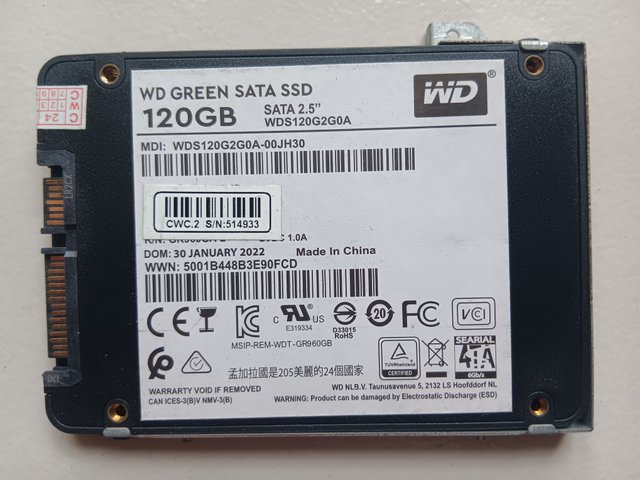 | 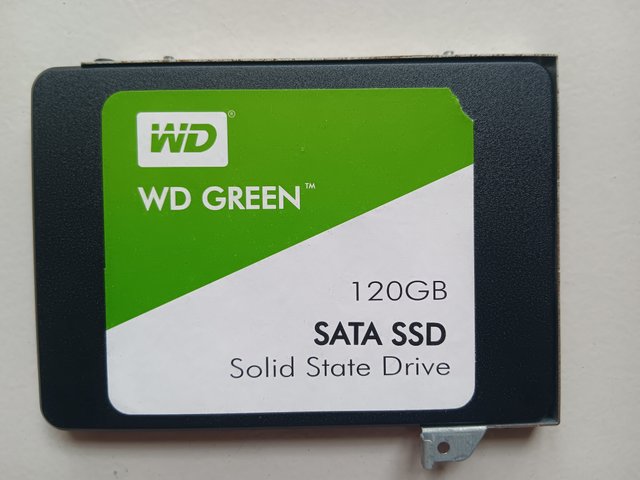 |
|---|
| SSD |
|---|
The short meaning of Solid State Drive. It is basically a type of flash storage system in computers. Its main function is to store information. Light in weight and small in size. SSDs don't have disks like hard drives. It contains several electric chips that store data. This SSD storage system works much faster than hard drives. Data is available from it in few microseconds which hard disk takes few milliseconds to do. Besides, its data transfer rate is much higher than that of hard drive. Also, due to the presence of magnetic fields in hard drives, there is a fear of easy data loss, which SSD drives do not have. SSDs also have less fear of falling and getting damaged due to the lack of internal components. Has fast read-write mechanism.
The key differences between SSD and HDD which makes effort efficient and reliable.
 |  |
|---|
| Hard Disk Drive HDD | Solid State Drive SSD |
|---|---|
| Due to the presence of moving parts it is prone to damage very easily | There are no moving parts in SSD, it is not likely to be physically damaged |
| HDDs have moving parts that cause them to vibrate and cause noise and also gets hot due to moving | SSDs do not make any noise or heat up because there are no moving parts |
| HDD consumes a lot of power due to its many moving parts | SSDs consume much less power because there are no moving parts.That's why SSD saves a lot of power compared to hard disk |
| A computer with HDD takes 30 to 40 seconds to boot | A computer with SSD takes 10 to 13 seconds to boot |
| The speed available to copy or transfer any file to HDD is 50 to 120 Mbps | The speed is 200 to 500 MBBS on SSD. This speed of file transfer saves a lot of time and effort |
| HDD is much slower about 30% | SSD is about 30%faster then HDD |
| Due to low speed it takes more time to read and write | Due to high speed its fast to read and write data |
Considering all these differences and pros and cons, it is better to use SSD is much better than HDD. In this you will get fast data read write speed due to which the speed of your computer will increase a lot.
SSD is best suited for gaming and almost every gaming computer now uses SSD. It is not at all the case that a computer must have an SSD. But having an SSD greatly increases the performance of computer.
SSD or HDD can be used in all situations. But some special situations SSDs provide faster load times for games, applications and movies. Because of the technology SSD are lighter and better able to withstand movement and drops. Also, solid state drives use less power, allowing computers to run cooler.
Task-03
| Internal vs External Drives |
|---|
Question: What are the pros and cons of using an external hard drive compared to an internal one?
Some of the advantages and disadvantages of using an external hard drive are given below-
| Advantages |
|---|
1)Portability– It can be easily carried from one place to another.
2)Extended storage– It can be used as attached storage if the internal storage space is low.
3)Data Backup– Some important personal data can be stored as backup.
4)Plug-and-play convenience- External hard drive can be directly connected to computer through USB.
5)Multi-device compatibility- It can be used various types of things like laptops, desktops, TVs, gaming consoles, etc.
6)Faster speed with SSD option- The speed of external SSD drives is much faster.
| Disadvantages |
|---|
1)Risk of loss- Being small in size makes it more likely to be stolen or lost.
2)Risk of damage– There is a possibility of falling or getting shocked which can result in loss of data.
3)Connectivity Limitation- May not connect to old USB ports or operating systems in some cases.
4)Power supply may be required- some large capacity hard drives require a separate power connection.
4)Chances of not getting faster (in case of HDD)-Usually external HDDs are slower than internal SSDs.
6)Price- High capacity or External SSD hard drives cost a lot more.
| Inspecting Your Drive Type and Connection |
|---|
Question: Open your PC/laptop (if possible) and take a photo of your internal or external drive. Identify if it’s an HDD or SSD and mention its size and type (SATA, NVMe, etc.).
🔹 Bonus: Record a video tutorial of how to access or identify the drive physically.
For Identification i have opened my computer hare is the vedio-
I identified it’s a HDD into my desktop computer. Now I am writing its specification
Model – PC P300
Speed – 7200rpm
Cache-64MB
Interface – SATA6Gb/s
Capacity – 1TB 6TB
Data transfer -6000MBPS
Size-3.5inch
SATA power connector
SATA data connector
For identification of a SSD i open my laptop and find out the SSD.
I identified a SSD in my laptop. Here is the specification
Model- WD Green SATA SSD
Capacity – 120GB
Size – 2.5inch
Interface – SATA
Data Transfer – 6Gb/s
Read and write speed – read up to 540MB/s and write up to 430MB/s
| Analyze HDD Health or SSD Status |
|---|
Question: Use CrystalDiskInfo or Windows Disk Management to check your drive’s status and health. Take a screenshot of the information.
🔹 Bonus: Explain key indicators (temperature, health, power-on etc)
At 1st i installed Crystaldiskinfo apps. Then i find out my SSD conditions.
| Health Condition |
|---|
SSD Health Condition You can understand the current condition and performance capability. Regular health status monitoring can prevent data loss by detecting problem. SSD has a limited number of write cycles. Their performance may decrease over time.
My health status of my SSD is showing Good
| Temperature Status |
|---|
The operating temperature of SSD is a very critical issue. It increases the performance and durability of SSD. The temperature range should be from 0°C to 70°C.
The temperature status of my SSD is showing 30°C
| Power on hour |
|---|
SSD's Power On indicates how long it has been powered and running.
The power on hours status of my SSD is showing 273 hours
I have completed all the homework task. Thanks to everyone who read my post.
I invited three of my friends
@mdpolasmia
@rafi67
@akbarmia
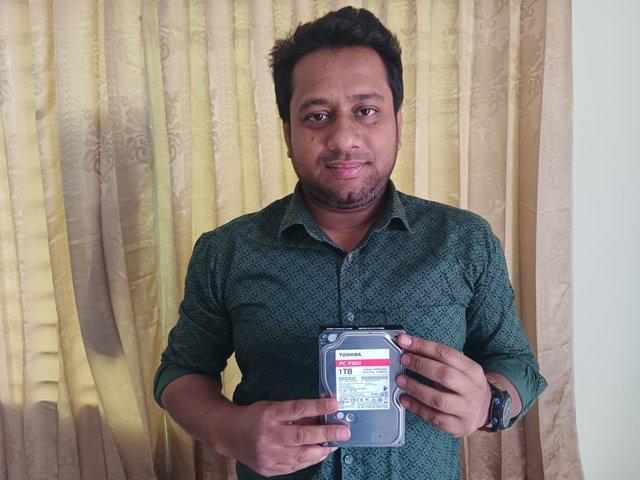


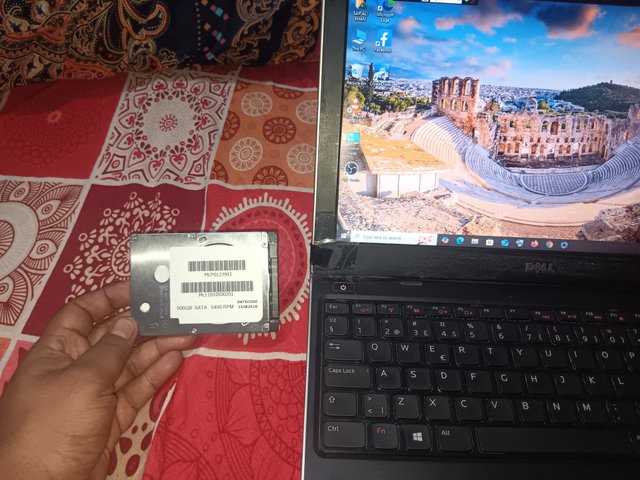
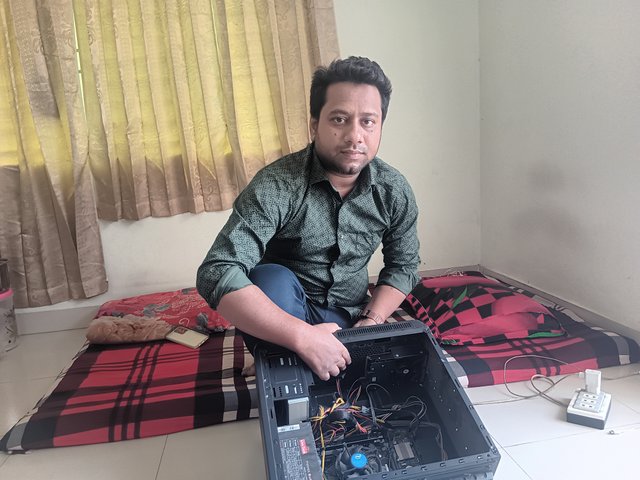
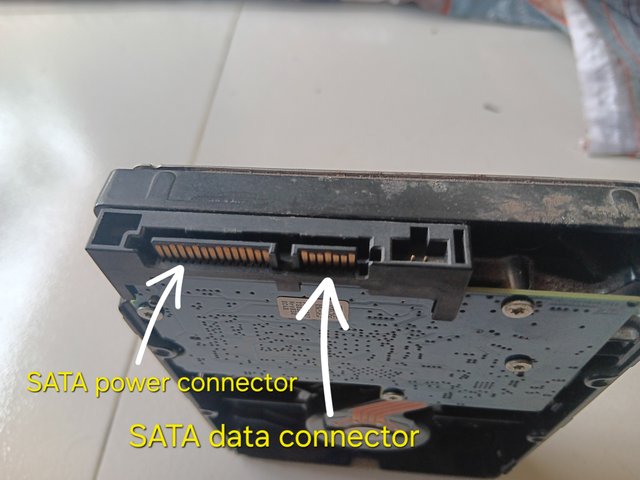

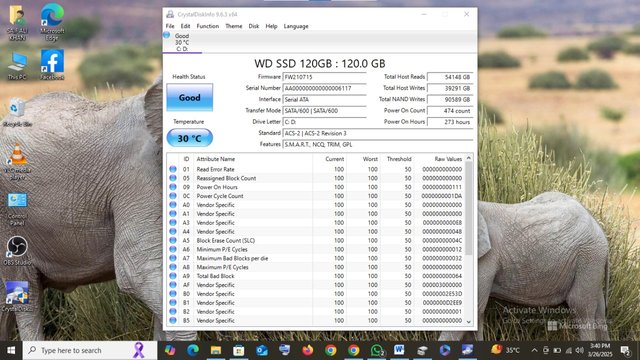
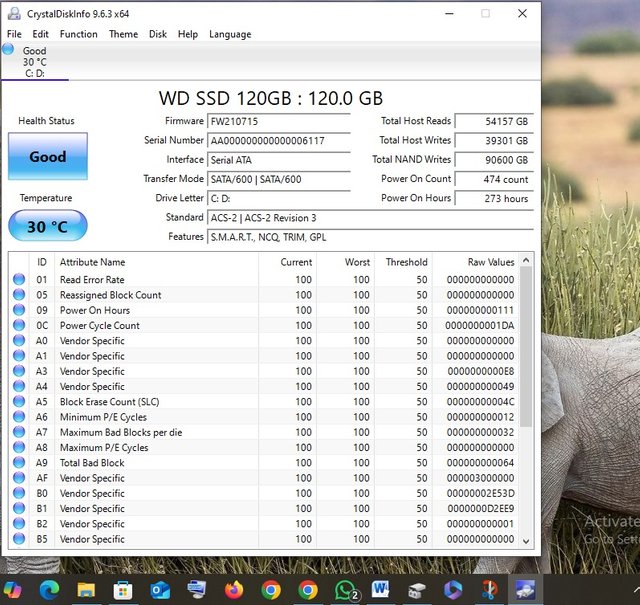

@tipu curate
Upvoted 👌 (Mana: 6/7) Get profit votes with @tipU :)
Congratulations, your post has been upvoted by @scilwa, which is a curating account for @R2cornell's Discord Community. We can also be found on our hive community & peakd as well as on my Discord Server
Felicitaciones, su publication ha sido votado por @scilwa. También puedo ser encontrado en nuestra comunidad de colmena y Peakd así como en mi servidor de discordia